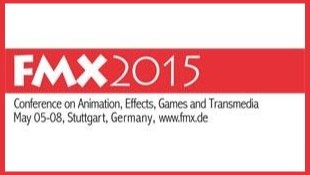Conference on Animation, Effects, Games and Transmedia to explore the impact of immersive technologies on financing, content creation, distribution and viewing behavior across different platforms.

For this reason, FMX looks at a broad range of topics that relate to "Immersion and Virtual Realities -- The Future of Content Viewing and Producing" in 2015, thus exploring the impact of immersive technologies on financing, content creation, distribution and viewing behavior across the different platforms. Numerous renowned industry professionals have announced their participation and content curation in areas of Concept Art, The Fine Art of Animation, Virtualization, the Demoscene and Funding & Financing Technology Start-ups -- but there are even more tracks to be announced (confirmed speakers below). However, the Art, Technology and Business communities are not only invited to come together in the conference and forum program: together with its long-time partner, the 22nd Stuttgart Festival of Animated Film (ITFS), FMX organizes the Animation Production Day, an exclusive business platform for animation professionals that takes place May 7-8, 2015.
Art - Concept Art and the Fine Art of Animation
Artists and their inspirational work are at the heart of FMX. Concept art often constitutes the creative starting point for this inspirational work in film, games and other media. Production Designer Patrick Hanenberger curates different sessions on this powerful source of creativity for the second time. The American scientific and academically trained creature designer and concept artist Terryl Whitlatch -- whose prolific work includes creature design for Lucasfilm, i.e. for Star Wars Episode I - has already confirmed her attendance. In addition, concept artist and character designer Chris Appelhans, who has designed on films such as Coraline, Monster House and The Fantastic Mr. Fox, joins the row of experts.
Moreover, several speakers deliver a thorough analysis of "Animation as Fine Art." Curators Prof. Dr. Susanne Marschall and Dr. Rada Bieberstein (both University of Tuebingen) present a set of presentations that explore the richness of Animation as a distinct form of art and its immersive aesthetics and potential, spanning an arch from art history to 3D. Art is also the thematic focus of popular favorites such as the "Animation Wild ‘n Strange" track curated by Prof. Andreas Hykade (Filmakademie Baden-Wuerttemberg), which seeks out independent talent from all over the world, and Shelley Page's (Head of International Outreach at DreamWorks Animation) "Shelley's Eye Candy," where she presents her personal animated favorites from the last two decades.
Technology - Virtualization technologies & the Demoscene
The animation, effects, games and transmedia communities are driven by new developments and trends in the realm of technology. Jon Peddie (Founder of Jon Peddie Reserarch), who is one of the pioneers of the graphics industry, assumes curatorship for the "Virtualization" track. These sessions concentrate on virtualization technology and its effects on collaboration, communication and shared access with regard to professionals working in the art and entertainment industries.
Dr. Tomasz Bednarz (The Commonwealth Scientific and Industrial Research Organisation CSIRO, Australia) adds a slot of different presentations on the demoscene. The demoscene originated in Europe and has evolved into an international computer art subculture that creates non-interactive multimedia presentations rendered in real time, so called demos, to showcase computer hardware and/or software capabilities, musical or other artistic skills. Tomasz' track assembles famous demosceners that shed light on work processes, old school and new school demoscene and much more. Technology is also the common thread of tracks that analyze the state-of-the-art of pre-production, next-gen images, pipelines, virtual production and other topical issues.
Business -- New trends ahead
Innovation is not only a matter of artistic creativity or technological advancement - it's also of crucial importance when it comes to defining business strategies that secure the realization of media projects. For this reason, FMX places an emphasis on "Exit Strategies for Technology Start-ups" this year. Thierry Baujard (President of Media Deals) is responsible for the conceptualization of this track that constitutes a forum for start-ups and early-stage investors to present their investment portfolio to larger investors and corporations as well as other relevant stake holders with regard to exit investment strategies. The objective is to present exit investment strategies that will help early stage investors to realize value by selling their company stake (or a part of it) to a later stage investor, through a trade sales to a larger corporation on an IPO introduction (public offer).
Source: FMX 2015 Conference on Animation, Effects, Games and Transmedia







